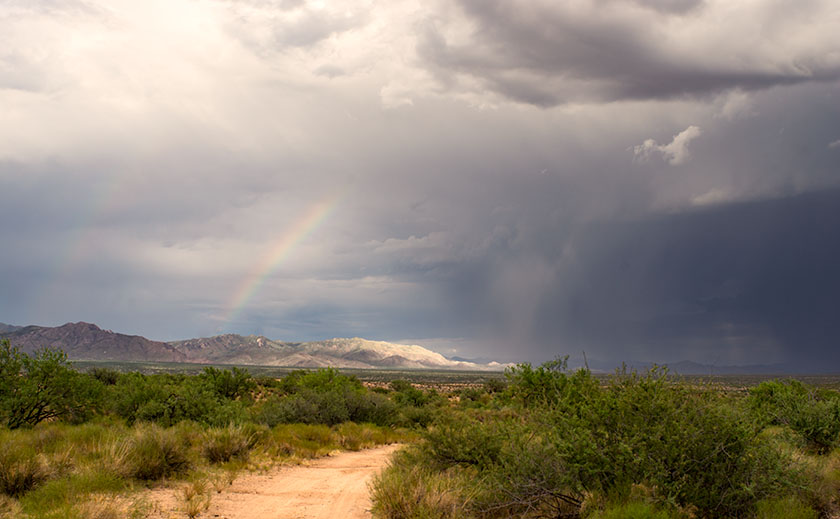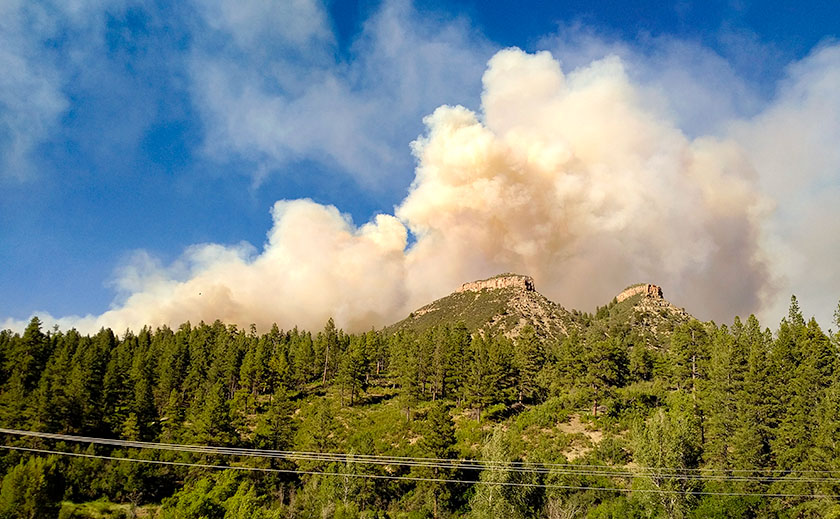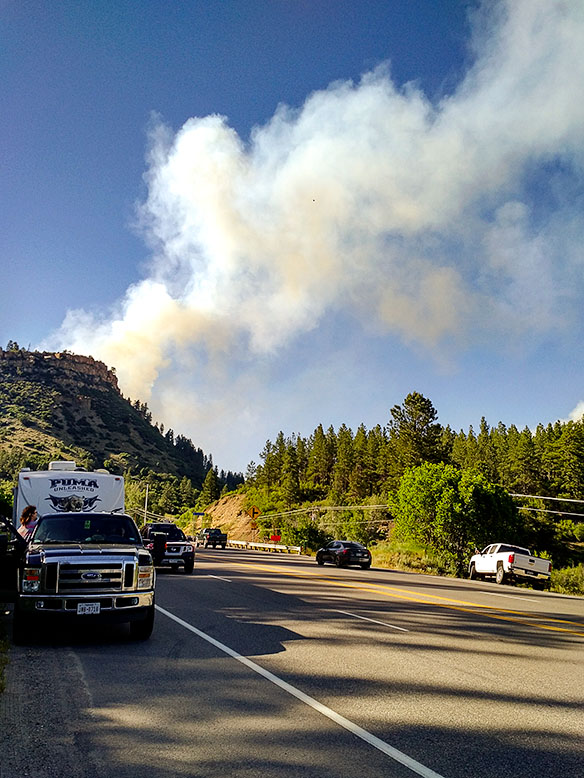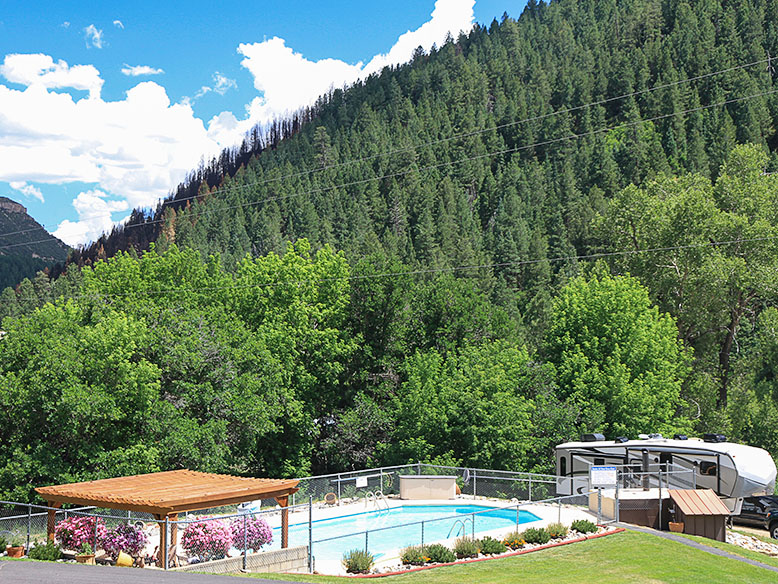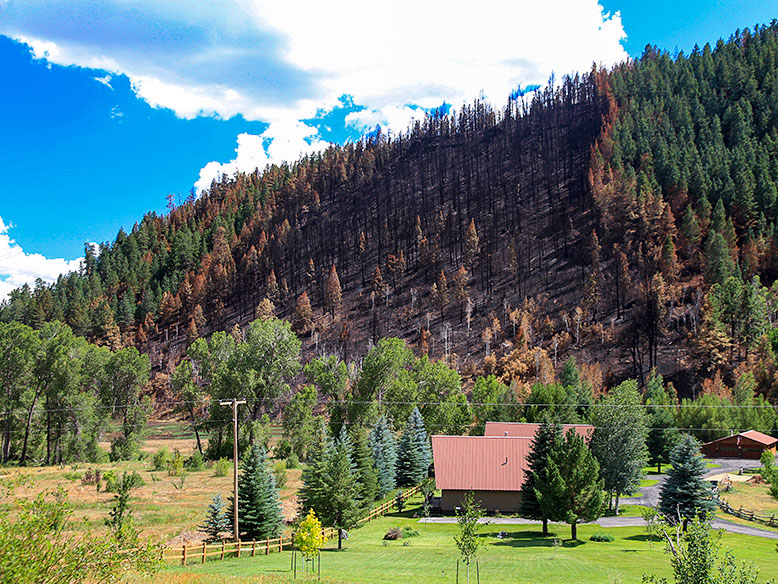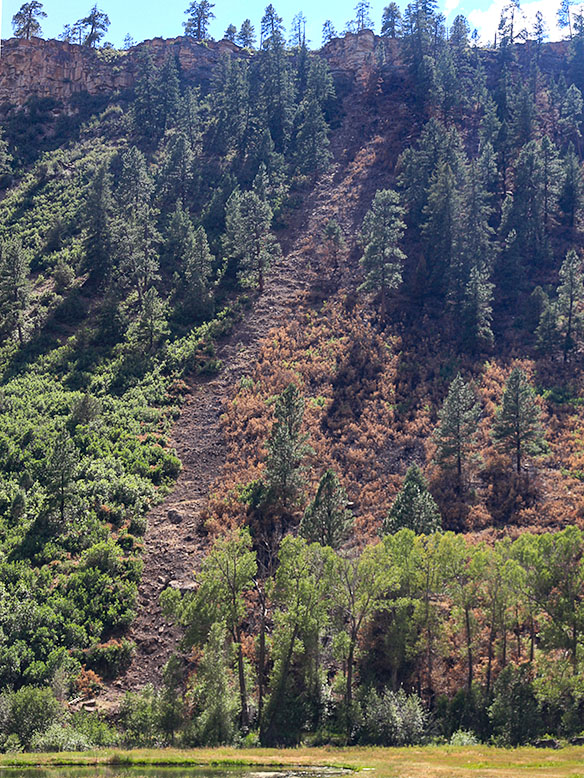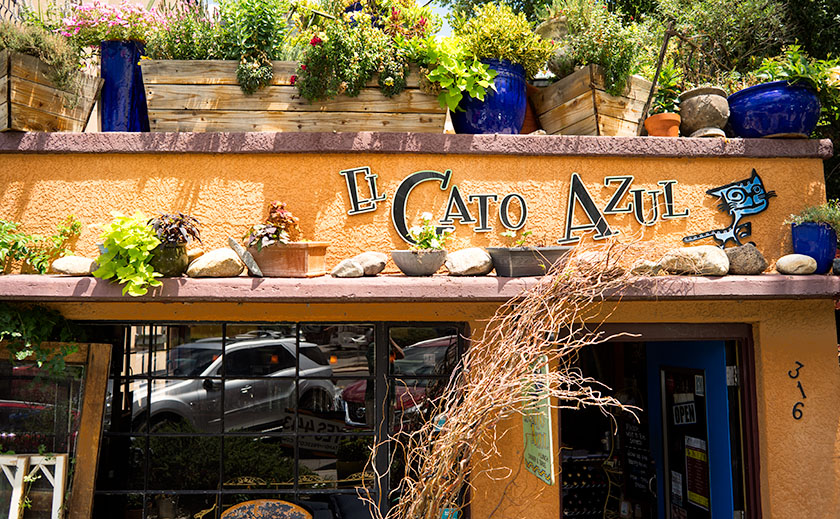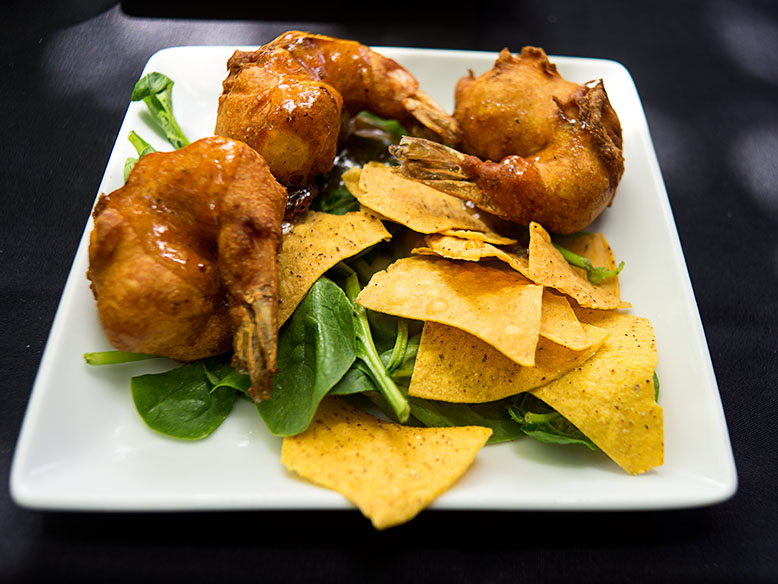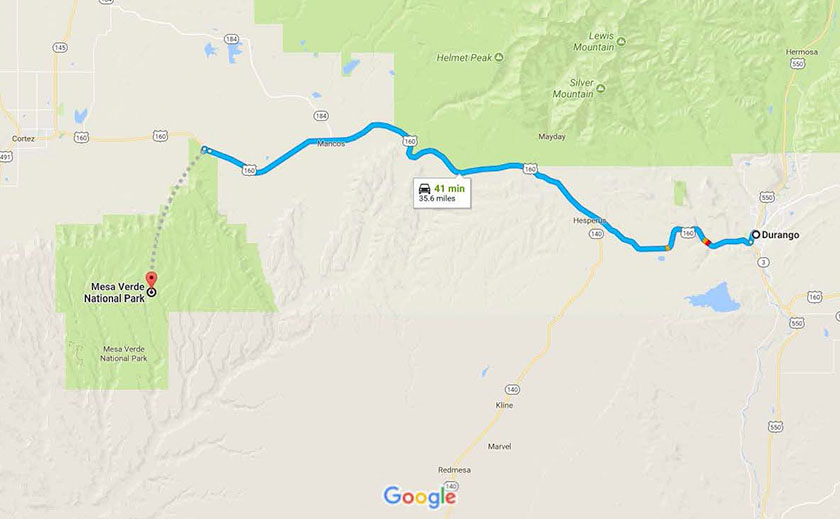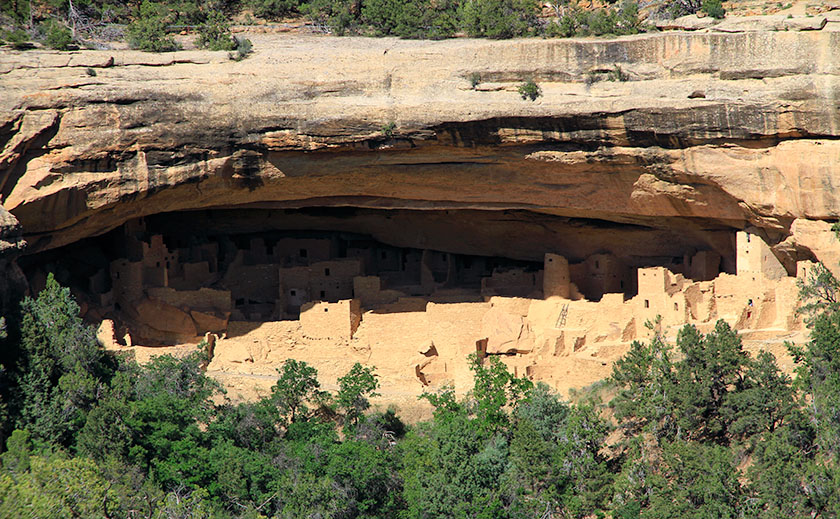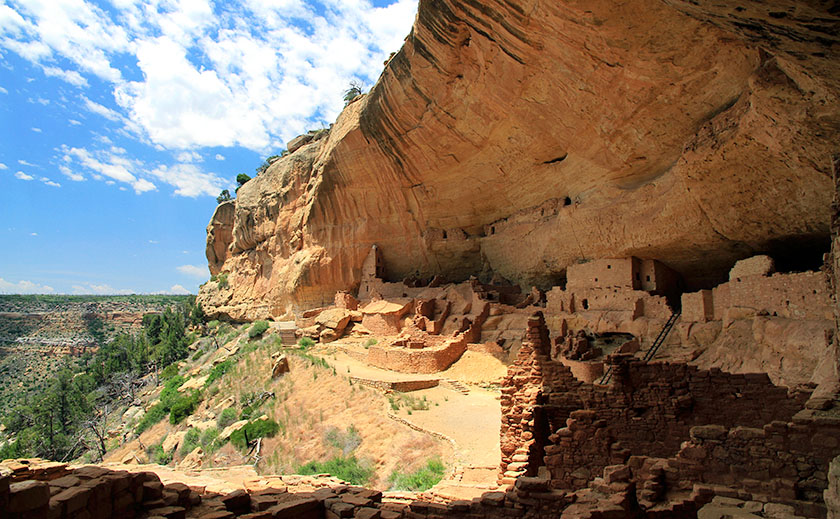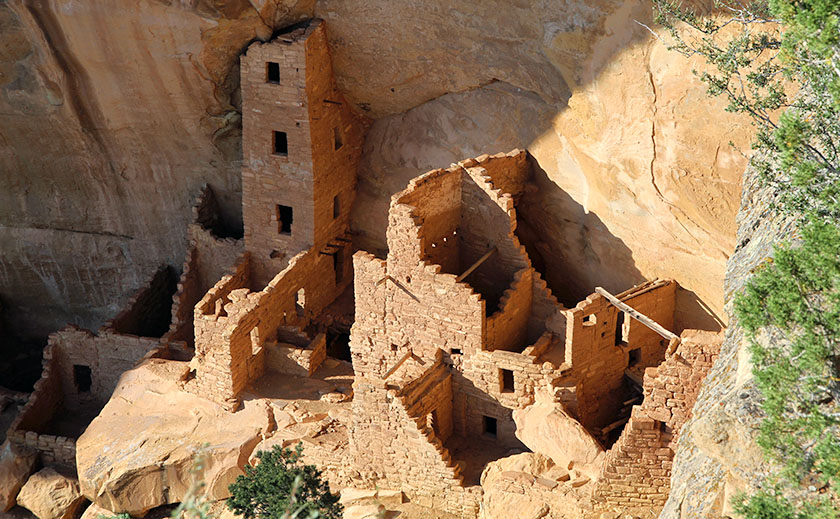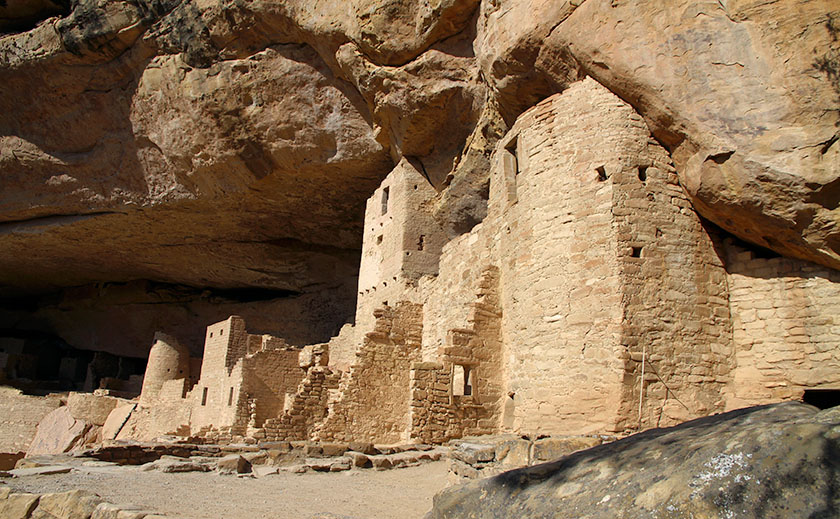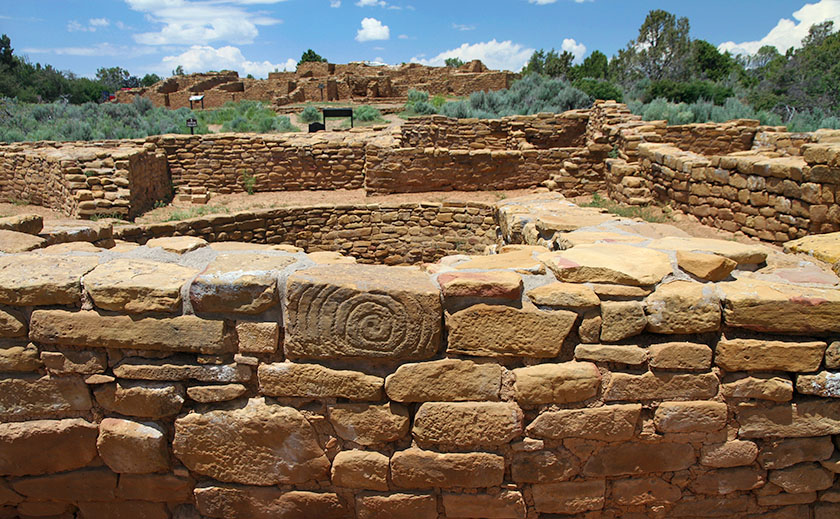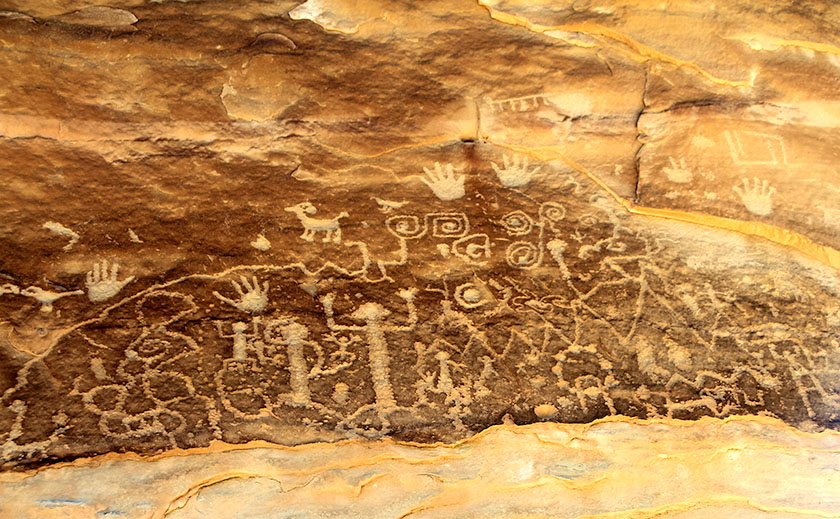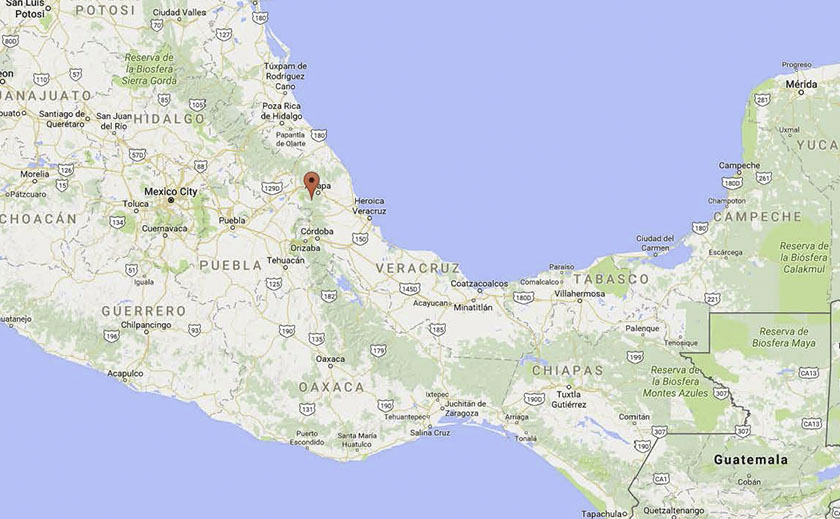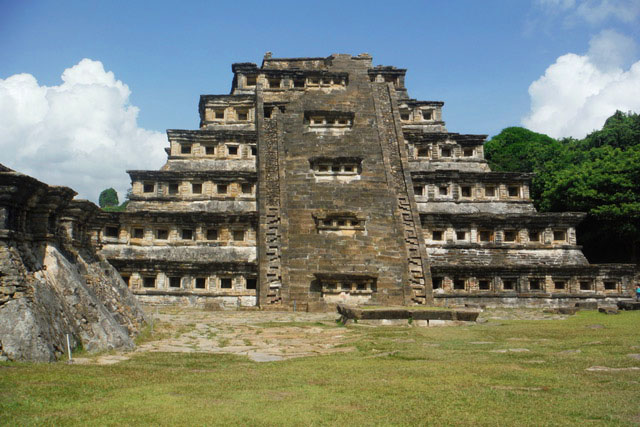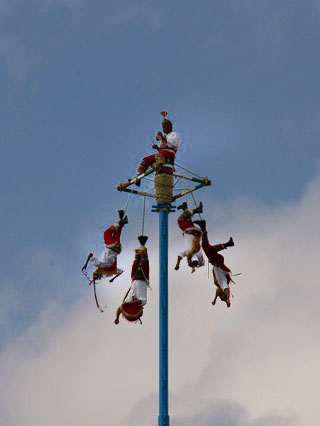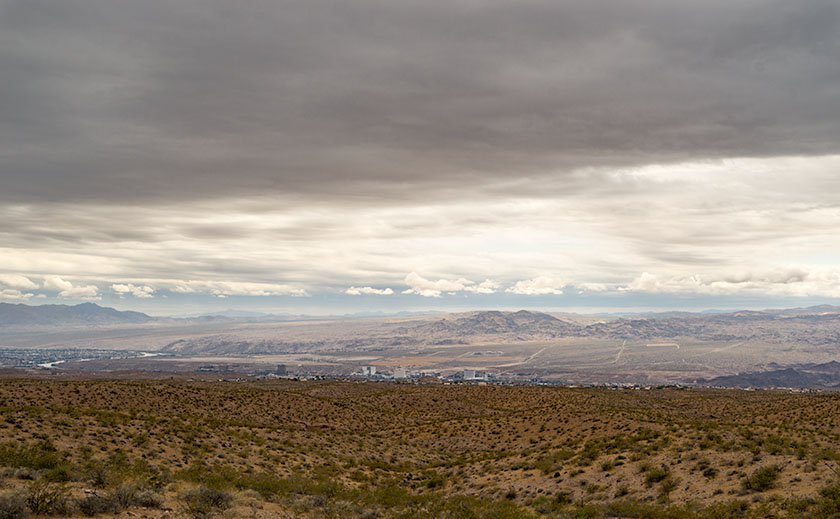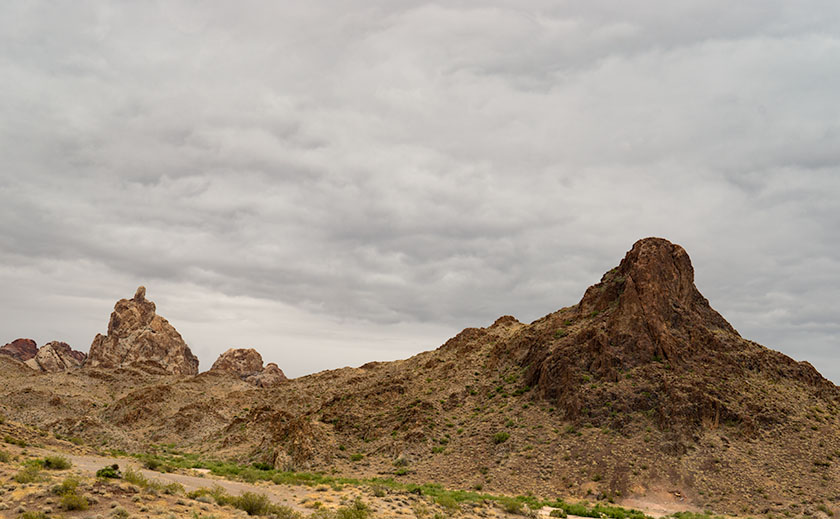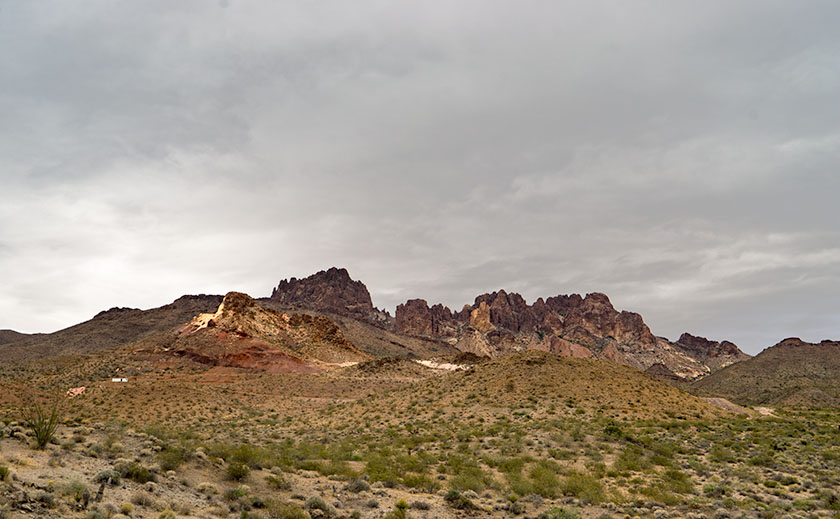Oh, the joy of sleeping under the covers with the windows open. We’re in Eagar, Arizona – about four miles west of the New Mexico border. Outside, the temperature is a crisp fifty-two degrees. In Phoenix we won’t see these temperatures until Halloween. Queen Anne is still contentedly snoring in bed, so all’s quiet in the world. I see a cloudless sky through the window and the sun is about to clear the next door trailer which will make it all but impossible to type, so I’ll be quick about my report.
Yesterday’s trip was a pleasant and uneventful six hours. Two of those hours we spent traversing the Phoenix Metropolitan area to Fountain Hills where we stopped to top off the tank and buy some road food. We phone-waved Jeff as we passed his Scottsdale house. Not expecting our call, he offered to put shoes on and meet us for a bite, but we declined because we were already moving.
Fountain Hills is the point where I feel we’ve finally left town. From there we drove the Bee-Line Highway, climbing out of the Valley of the Sun to Payson’s 6000 foot elevation. We noted each time Fritz’s outside temperature indicator dropped from the low 90’s to the high 80’s. That doesn’t seem like a lot until you factor the hour and a half driving time. In Payson, we headed east on Arizona Route 260 and made the last ascent up the Mogollon Rim, and breaking through the 7000 foot elevation. From there, the rest of the way was a gentle descent. Our next way-point was Showlow and back on US Highway 60, ironically the same highway we took out of Wickenburg.
It was almost 3:00 pm when we reached Round Valley — a five-mile circular flat at the foot of the White Mountains — containing the yin yang towns of Springerville and Eagar. Springerville is on the north along US 60 while Eagar is on the south along AZ 260 with Main Street connecting the two highways (Yes, I know they’re the same roads, but there’s a method to my route madness that I’ll ‘splain someday). We stopped at the local Safeway for provisions and a bite to tide us over until dinner before checking into our campgrounds.
About our campgrounds … all I can say is that I’m glad that I went to Alaska last year. This place is somewhere between Watson Lake and Peace Park Gardens in Vancouver, but that’s a very large spectrum and I consider this in the bottom percentile. It’s certainly not a resort like where Fred and Deb are working. It is small and quiet with mostly permanent residences and few spaces for us transients. We picked it for the WiFi reviews and the price. The price reflects the lack of facilities (no showers). When we came in, the hosts had just finished helping a guest with a grand fifth-wheel (“The largest we’ve ever had,” he told me), before helping us with The Ritz (“The smallest one we’ve ever had”). Thanks … I guess. Anyway, behind The Ritz, we have a lovely private space under large Ash trees for sunset cocktails; how could things be better?
This morning. we’re going to spend time to lay out an itinerary for the week. We have a lot on our list and we need to rank it. One item on the list is the 2017 Great Mexican Food Springerville Shootout. Springerville has two restaurants that we like and we’re going to offer up our two cents on (last night’s dinner was at one of them — more later). We also need to spend the morning knocking off the rust on our camping skills, a fact that became obvious to us during set-up yesterday. The adventure awaits and I’ll have lots of photos for you.
Till then … jw

